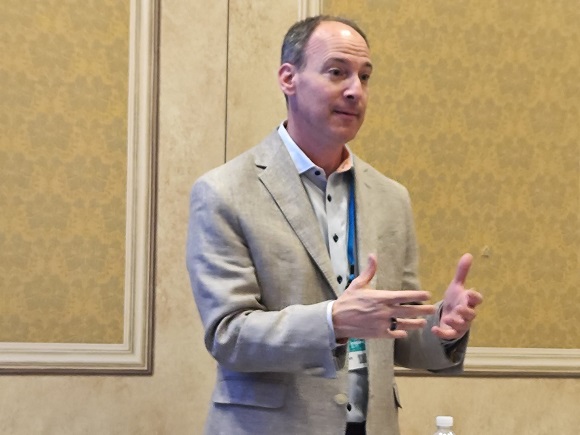Alteryx: Formulating decisions in a ‘culture of analytics’
People make decisions.
One piece of research recently ‘suggested’ that people make as many as 35,000 decisions a day – many of which may be made involuntarily of course – and if that’s not too fanciful a figure to entertain, then it must surely be many hundreds of personal (behavioral) decisions made… and business decisions, of course, would rank as some of the most important choices.
This core fundamental was tabled by Alan Jacobson, chief data & analytics officer at Alteryx in line with his presentations at the company’s Alteryx Inspire conference held (In Real Life) in Las Vegas this month.
Accuracy and confidence rank as the most important decision-making factors, with transparency, speed and consensus being far lower down the importance scale, suggested Jacobson.
The company has now released independent research titled The Decision-Making Technologies Shaping the Future of the Enterprise, as a suggestion of what the current state of decision-making actually looks like across global enterprises.
The study highlighted multiple practices stalling the accurate and timely decision intelligence required to thrive.
Challenging economic times force business leaders to deliver the right answers at massive speeds, but the current pace of decision-making is holding businesses back. This is making it difficult for businesses to make crucial decisions with the speed and confidence required.
“Isolated pockets of data and analytics access are currently hindering many organisations’ ability to gain clarity in a landscape of uncertainty,” said Jacobson. “At Alteryx, we’ve long believed that data and analytically optimised decision-making deliver better, faster, more efficient and more confident intelligence – all unlocking the potential to capitalise on insights needed to design better experiences.”
Selected ‘findings’ stemming from this study include an analysis which concludes that on average, operational decisions took two days, tactical decisions seven days and strategic decisions took 20 days.
Some 55% of organisations responded that data availability leads to faster decisions, yet only 24% reported using advanced decision intelligence technology and analytical tools to currently automate processes and help to make these decisions.
React, adapt… adapt again
Sharing data has clear benefits for making intelligent decisions at scale, but with leaders hesitant to make it available, time-to-insight and the ability to react and adapt has stalled.
A large 80% of enterprise leaders agreed access to data improves their own decision-making and the majority indicated advanced technologies such as analytics, business intelligence and artificial intelligence help deliver faster decisions.
“I can’t quite imagine who this other 20% of people who DO NOT think access to data would help them make better decisions, but think of it like a visit to your doctor (who would always tell you to eat better and do some exercise)… today I know that I woke up and failed to work out, so sometimes it’s just about knowing that you need a leg up to make things happen,” said Jacobson.
It’s a lot easier to teach a marketing person a little bit about data analytics than it is to teach a data scientist how to understand marketing, Jacobson reminds us – and this is a reality born out in other types of applied analytics as we have seen in the case of IBM using data analytics at Wimbledon to analyze ball movement, where tennis professionals did the hands-on analysis, not data scientists.
From his perspective, the best way to start using data is to “try” and start using data, this – at the very least – should provide some impetus to start working with data analytics at some level.
Optimised decision-making requires real-time insights: The future of decision-making is automation, but machines will not be making decisions alone – a total of 97% of respondents indicated that they can imagine a future in which all decisions in their organisation are automated.
Defeating decision-fatigue
“People can suffer from ‘decision-fatigue,” said Jacobson. “When too many decisions need to be made, that’s a hard place to be. We can group the challenges related to decision-making based on what kind of ‘culture of analytics’ any given organisation has – in firms where there is a long chain of command, where data is stored in multiple locations, where analytics tools are not available to everyone and where access to data is not always readily available.”
On average, organisations believed that decision-making will be fully automated in 10 years, with many believing that it will take longer. Only 4% of respondents said that they think the future of decision-making will be machine-controlled, meaning that machines will analyse, produce insights and make decisions without any human input.
Thankfully perhaps, 66% of those surveyed believed that the future of decision-making will be a combination of human and machine.
“A lot of people think that when you completely automate a decision you are taking the human out – of course that’s not true as the human will always be behind the automation in the first place… but that said, there are tasks where we want to take the human-in-the-loop out completely [in the long term], but other decisions will always have more human involvement,” concluded Jacobson.
The survey was conducted by Coleman Parkes in March and April 2023 and targeted 2,800 senior business decision-makers, IT decision-makers, data analysts and line of business leaders about organisational decision-making.

Alan Jacobson, chief data & analytics officer at Alteryx.



